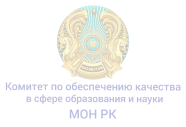«FOR YOU IS YOUR RELIGION, AND FOR ME IS MY RELIGION»: LINGUISTIC, STRUCTURAL AND RHETORICAL ANALYSIS OF SURAH ‘AL-KĀFIRŪN’ IN THE QUR’AN
DOI:
How to Cite
Abstract
This article analyses the 109 Surah of Qur’an (Q 109) from linguistic and religious studies points of view. The Surah «al-Kāfirūn», despite its rather short length, serves as a quite useful source for contextual analysis of the time of its formation. Moreover, this passage could potentially shed some light on inter- textual connections in the whole Qur’an. Unfortunately, this Surah has never been a central focus of academic attention. Using communicative methods of word-by-word translations, the research reveals the complex nature of relationships between early Islamic community and other religious groups – Jews and Christians. Considering Q 109 in its historical context, the article demonstrates how Muslims, being a minority group at that time, attempted to negotiate its own existence with other religious groups. The research is therefore divided into two dimensions of analysis: micro-level where intra-structure of Q 109 is analyzed and macro-level where inter-textual coherence with other Surahs is scrutinized.
Keywords: surah, quran, early Islam, religious groups, al-kafirun, Muhammad
References
Haleem, Abdel Muhammad. The Qur'an: English Translation and Parallel Arabic Text. – New York: Oxford University Press, 2010.
Izutsu, Toshihiko. Ethico-Religious Concepts in the Qur'an. – Montreal: McGill-Queen's University Press, 2002.
McAuliffe, Jane Dammen. The Cambridge Companion to the Qur'an. – New York: Cambridge University Press, 2006.
Newmark, Peter. Approaches to Translation. – Oxford: Pergamon Press, 2001.
Abdel Haleem, Muhammad, and Elsaid M. Badawi. Arabic-English Dictionary of Qur'anic Usage. – Leiden: Brill, 2008.
Sells, Michael. Approaching the Qur'an: The Early Revelations. 2nd ed. – Ashland: White Cloud Press, 1999.
Droge, Arthur J. The Qur'an: A New Annotated Translation. – Bristol: Equinox Publishing Ltd., 2013.
Fischer, Wolfdietrich. A Grammar of Classical Arabic. Translated by Jonathan Rodgers. 3rd ed. – London: Yale University Press, 2002.
Jeffery, Arthur. The Foreign Vocabulary of the Qur'an. – Leiden: Brill, 2007.
Behn, Wolfgang, trans. The History of the Qur'an by Theodor Nöldeke, Friedrich Schwally, Gotthelf Bergsträßer and Otto Pretzl. – Brill, 2013.
Welch, A.T., Paret, R., and Pearson, J.D. Al-Ḳurʾān. In Encyclopaedia of Islam, Second Edition, edited by P. Bearman, Th. Bianquis, C.E. Bosworth, E. van Donzel, W.P. Heinrichs, P.J. Bearman (Volumes X, XI, XII), Th. Bianquis (Volumes X, XI, XII), et al. DOI: http://dx.doi.org/10.1163/1573-3912_islam_COM_0543.
Robinson, Neal. Discovering the Qur'an: A Contemporary Approach to a Veiled Text. – London: SCM Press Ltd., 1996.
Abdul-Raof, Hussein. Qur'an Translation: Discourse, Texture and Exegesis. – London and New York: Routlegde, 2001.
Abdul-Raof, Hussein. Consonance in the Qur'an: A Conceptual, Intertextual and Linguistic Analysis. –Muenchen: Lincum Europe, 2005.
Neuwirth, Angelika. Stuctural, linguistic and literary features // The Cambridge Companion to the Qur'an, edited by Jane Dammen McAuliffe. – New York: Cambridge University Press, 2006. – P. 97-113.
Cuypers, Michel. Composition of the Qur'an, Rhetorical Analysis. – London: Bloomsbury Publishing, 2015.
Hoffmann, Thomas. The Poetic Qur'an: Studies on Qur'anic Poeticity. – Wiesbaden: Otto Harrassowitz GmbH & Co. KG, 2007.
Gwynne, Rosalind Ward. Patterns of Address. // The Blackwell Companion to the Qur'an, ed. by Andrew Rippin. –Blackwell Publishing Ltd, 2017. – P. 73-87.
Omar, Nida, Salahuddin Bin Mohd, and Kais A. Kadhim. Rhetorical meaning of Vocative Sentences in the Glorious Qur'an with Reference to Translation // International Journal of Humanities and Social Science. – 2011. - №1 (21). – P. 308-14.
El-Awa, Salwa . Repetition in the Qur'ān: A Relevance Based Explanation of the Phenomenon // Islamic Studies 42. – 2003. – №4 (42). – P. 577-93. URL: http://www.jstor.org/stable/20837305.
Neuwirth, Angelike. Rhetoric and the Qur'an // Encyclopaedia of the Qur'an, ed. by Janne Dammen McAuliffe. – Washington DC: Georgetown University.
Jucker, Andreas. Irrelevant repetitions : a challenge to relevance theory. // SPELL: Swiss papers in English language and literature. – 1994. - №7. – P. 47-60. DOI: http://dx.doi.org/10.5169/seals-99898.
Stewart, Devin. New Perspectives on the Qur'an: The Qur'an in its historical context. Ed. by Gabriel Said Reynolds. – New York: Routlegde, 2011. – P. 327-57.








